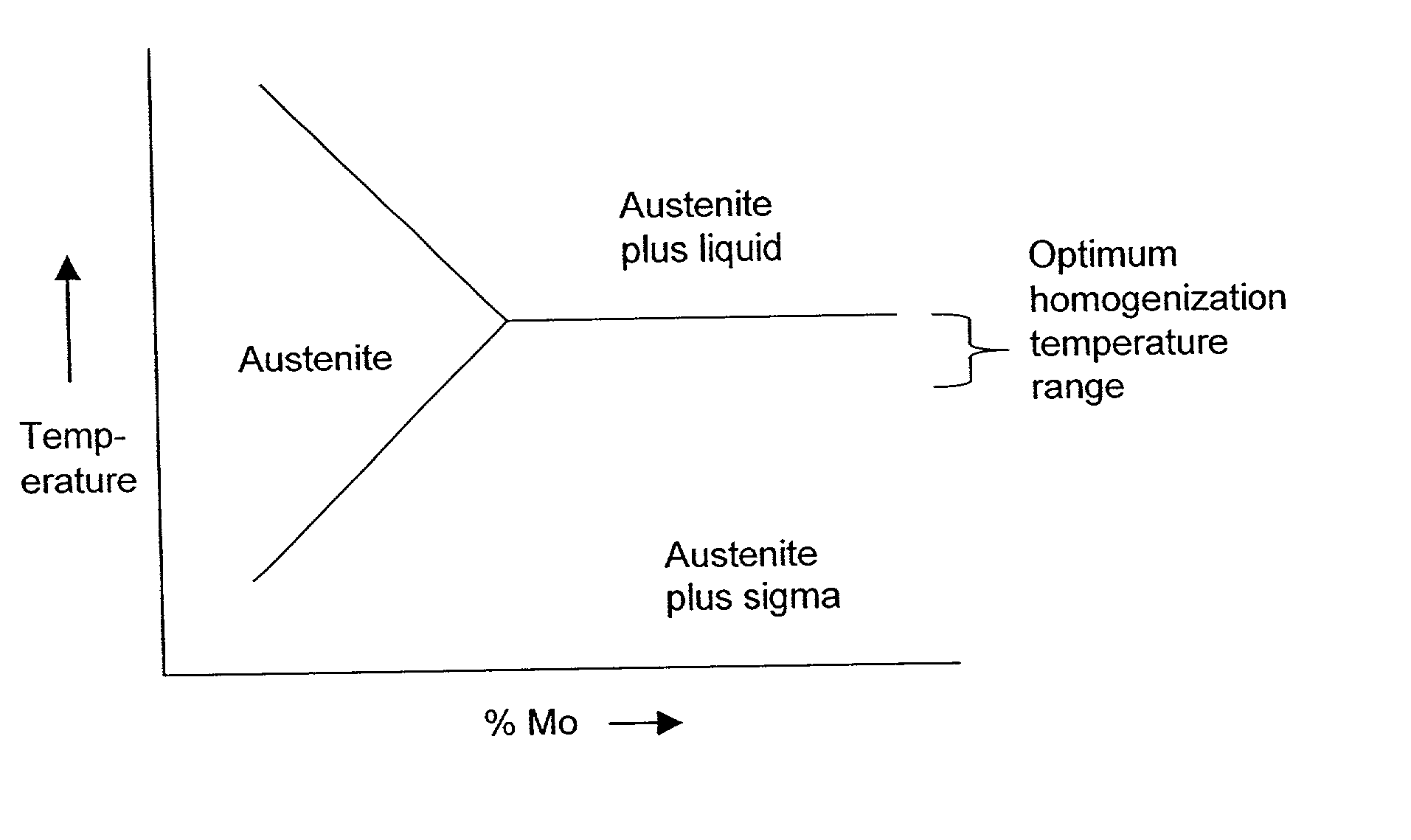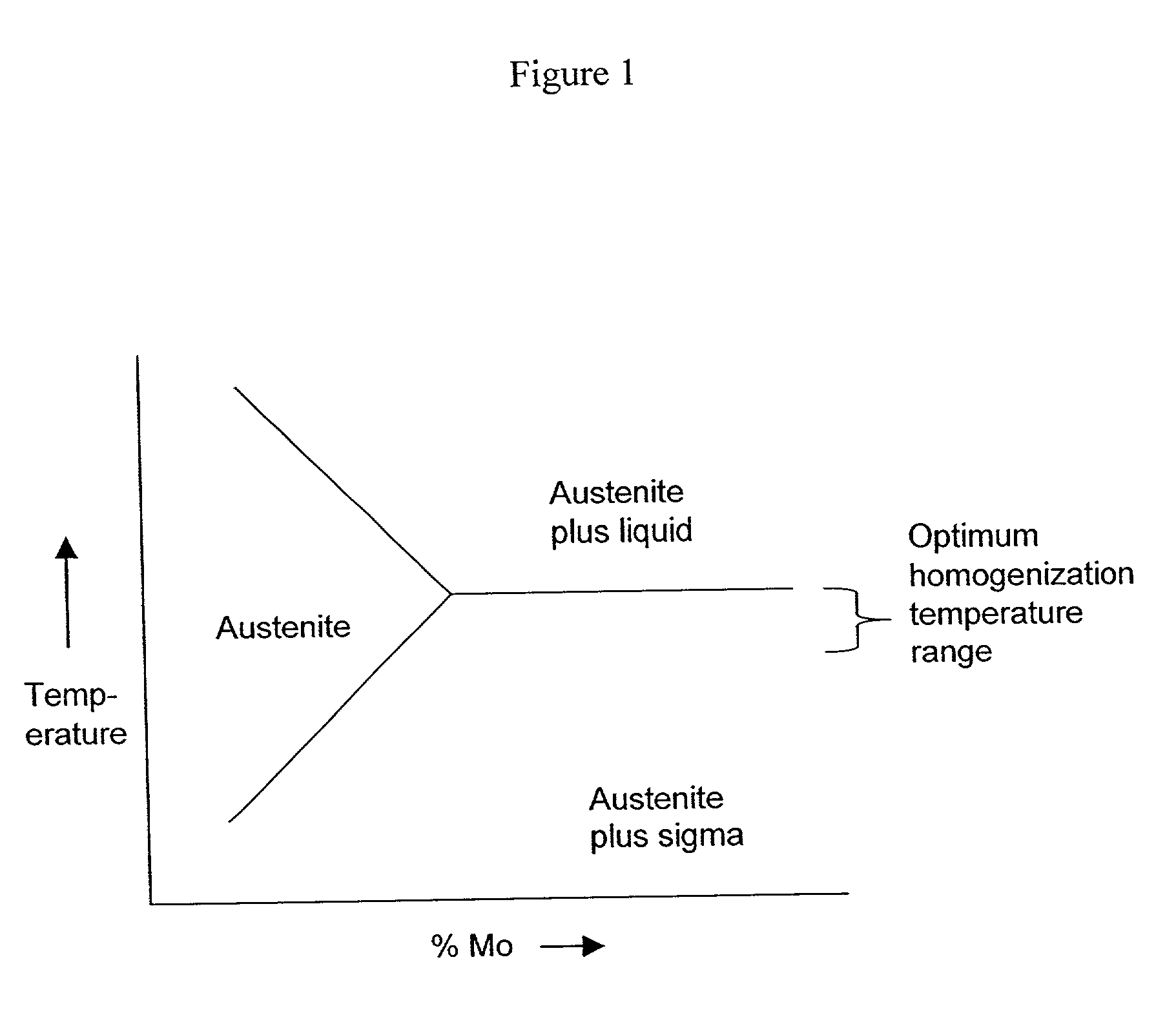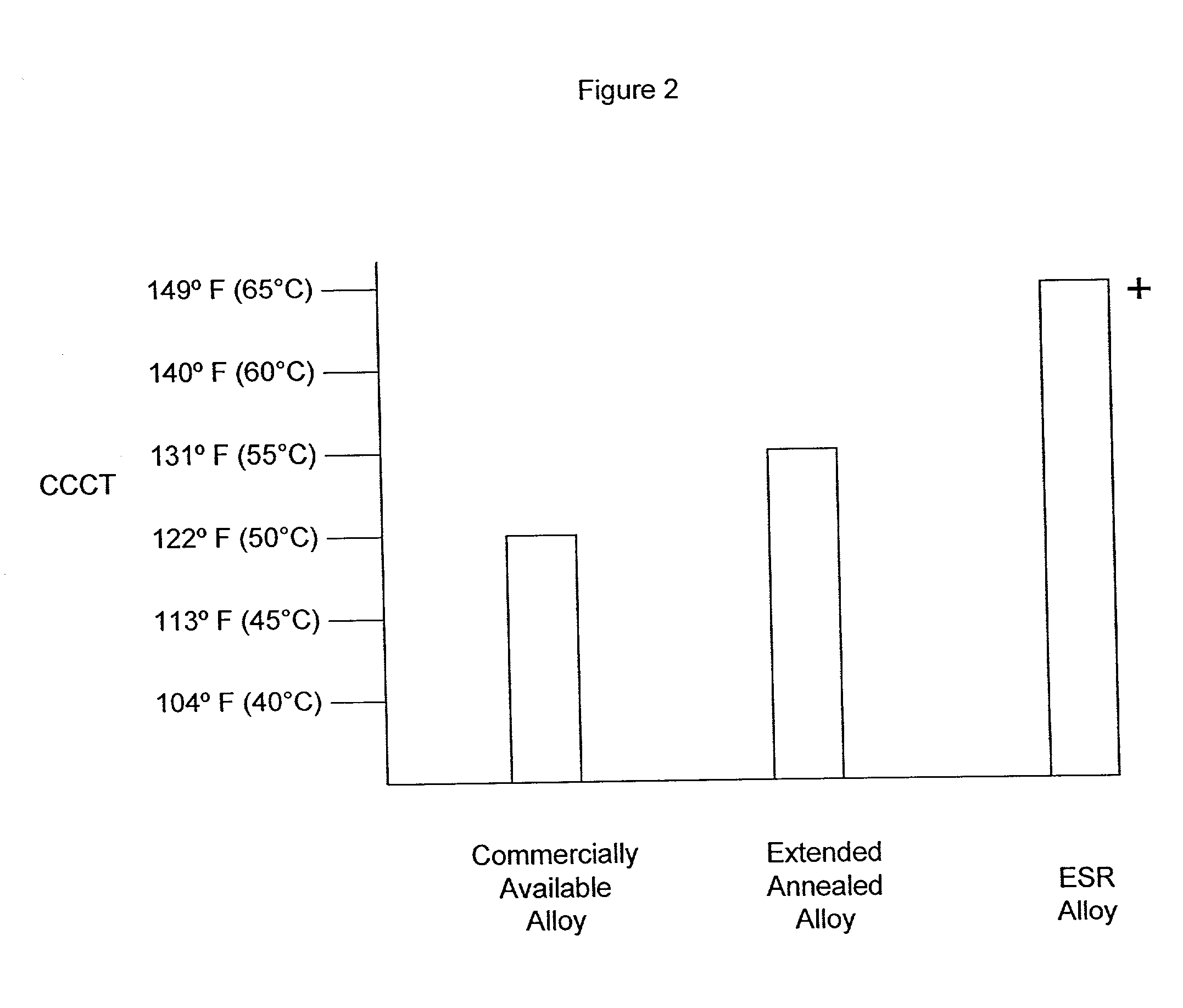Method of producing stainless steels having improved corrosion resistance
a technology of stainless steel and corrosion resistance, which is applied in the direction of metal-working equipment, welding/cutting media/materials, metal-working equipment, etc., can solve the problems of severe forms of corrosion, incomplete molybdenum-containing alloys, and aggressive corroding of these alloys, so as to prevent the development of sigma, promote higher cct values, and avoid alloy porosity and problems
- Summary
- Abstract
- Description
- Claims
- Application Information
AI Technical Summary
Benefits of technology
Problems solved by technology
Method used
Image
Examples
example 1
[0054]
3TABLE 3 Test Method - Modified ASTM G-48 Practice B Test Solution - Acidified Ferric Chloride Sample Preparation - Mill surface, Acid Cleaning Weight Sample Test Loss Deepest Code Temp. (gm / cm.sup.2) Crevice Remarks 120B 451 113.degree. F. 0.0000 -- No apparent crevice attack (45.degree. C.) 120B 452 113.degree. F. 0.0000 -- No apparent crevice attack (45.degree. C.) 120B 501 122.degree. F. 0.0000 -- No apparent crevice attack (50.degree. C.) 120B 502 122.degree. F. 0.0000 -- No apparent crevice attack (50.degree. C.) 120B 551 131.degree. F. 0.0000 -- No apparent crevice attack (55.degree. C.) 120B 552 131.degree. F. 0.0000 -- No apparent crevice attack (55.degree. C.) 120B 651 149.degree. F. 0.0000 -- No apparent crevice attack (65.degree. C.) 120B 652 149.degree. F. 0.0000 -- Slight attack on one edge (65.degree. C.)
[0055] Table 3 shows the results of a modified ASTM G-48 Practice B crevice corrosion test performed on AL6-XN PLUS.TM. alloy that has been prepared by the prio...
example 2
[0056]
4TABLE 4 Test Method - Modified ASTM G-48 Practice B Test Solution - Acidified Ferric Chloride Sample Preparation - All surfaces heavily ground followed by Acid Cleaning Weight Sample Test Loss Deepest Code Temp. (gm / cm.sup.2) Crevice Remarks 19-CBE1 131.degree. F. 0.0001 -- Very shallow attack on (55.degree. C.) edges 19-CBE2 131.degree. F. 0.0001 -- Very shallow attack on (55.degree. C.) edges
[0057] Table 4 shows the results of a modified ASTM G-48 Practice B crevice corrosion test performed on AL6-XN PLUS.TM. alloy prepared by the prior art method described above, and with an additional two-hour extended annealing homogenization treatment at 2150.degree. F. (1177.degree. C.). At 131.degree. F. (55.degree. C.), both samples experienced a very shallow attack on the edges, but the crevice depth was not measurable. In addition, each sample experienced a weight loss of 0.0001 gm / cm.sup.2. The data of Table 4 demonstrates that the homogenization performed by extended annealing pr...
PUM
| Property | Measurement | Unit |
|---|---|---|
| Fraction | aaaaa | aaaaa |
| Fraction | aaaaa | aaaaa |
| Time | aaaaa | aaaaa |
Abstract
Description
Claims
Application Information
 Login to View More
Login to View More - R&D
- Intellectual Property
- Life Sciences
- Materials
- Tech Scout
- Unparalleled Data Quality
- Higher Quality Content
- 60% Fewer Hallucinations
Browse by: Latest US Patents, China's latest patents, Technical Efficacy Thesaurus, Application Domain, Technology Topic, Popular Technical Reports.
© 2025 PatSnap. All rights reserved.Legal|Privacy policy|Modern Slavery Act Transparency Statement|Sitemap|About US| Contact US: help@patsnap.com



